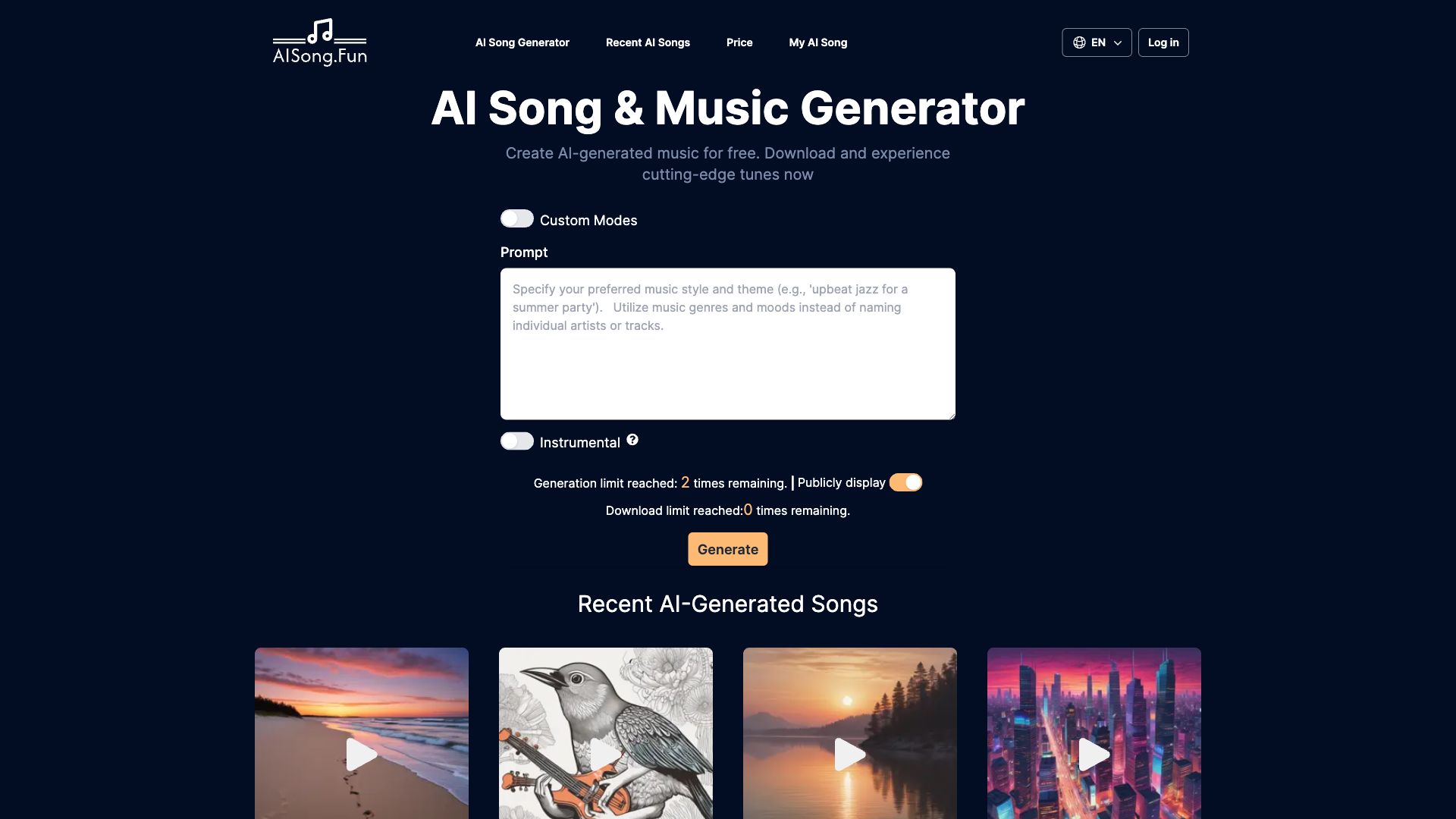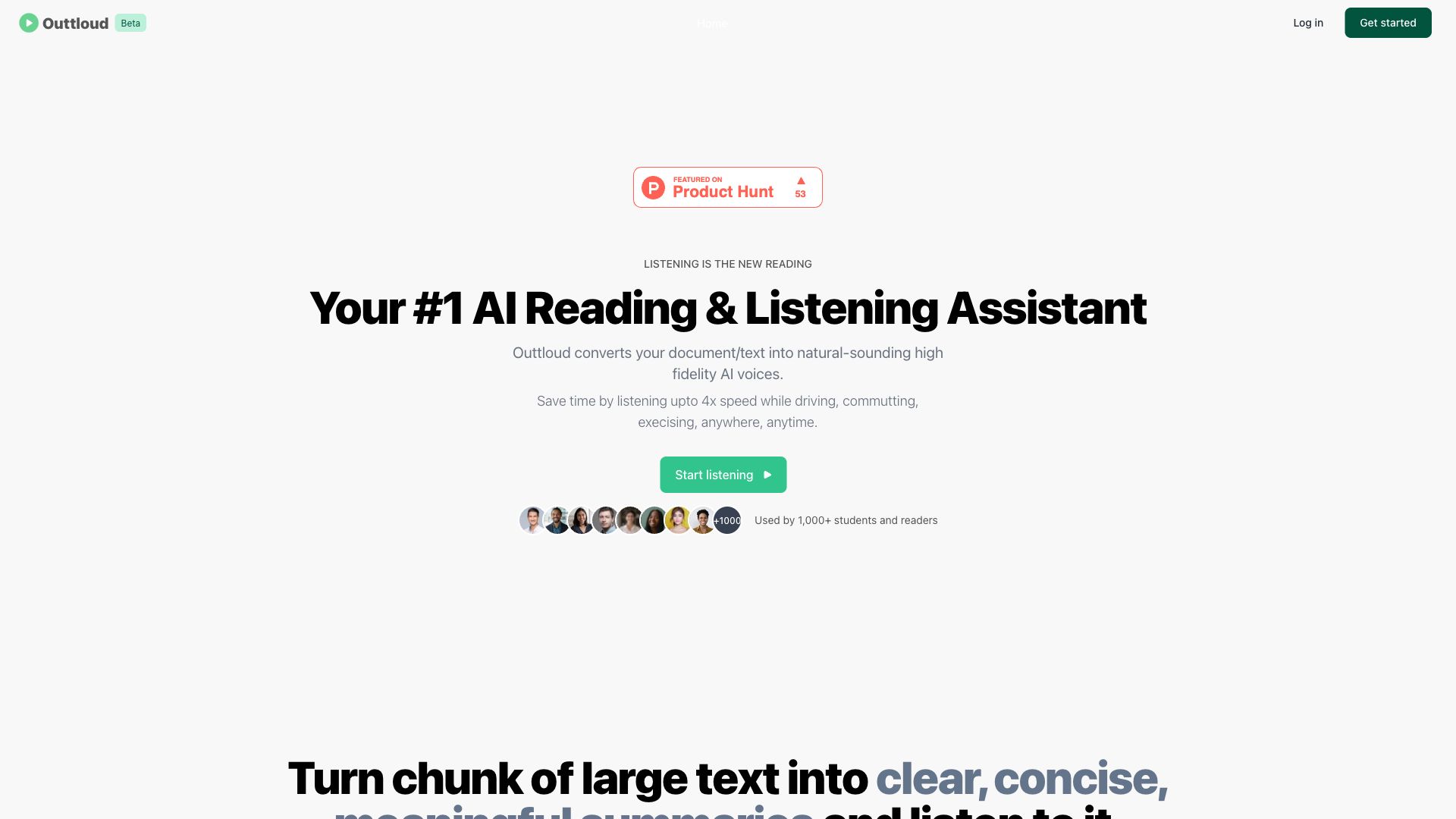Awesome Text-to-Speech Tools in 2024
Discover the awesome 3 AI tools for 2024 By Candytools
Unlock your musical creativity. Let AI compose captivating melodies, rhythms, and lyrics for you. For enthusiasts or songwriters, download AI-generated MP3s today!
Outtloud provides realistic AI voice generators and text-to-speech software for various applications. Convert your text into natural-sounding voiceovers with ease. Try it free!
Voice Lark is an AI voice cloning and audio editing tool that allows you to create realistic voiceovers and edit audio with ease. Clone your voice or choose from a library of voices, generate high-quality audio, and perfect your projects with advanced editing features.
More AI Tools Categories
What is Text-to-Speech?
Text-to-Speech: Giving Words a Voice
Text-to-speech (TTS), also known as speech synthesis, is a technology that converts written text into spoken audio. It essentially gives words a voice, allowing computers to "read" text aloud. This process involves transforming written characters into phonetic representations and then synthesizing corresponding speech waveforms.
Here's a breakdown of how TTS works:
- Text Analysis: The system analyzes the input text, identifying words, punctuation, and other linguistic features. This stage may involve natural language processing (NLP) techniques to understand the text's meaning and context.
- Phonetic Conversion: The text is converted into a phonetic representation, which maps written characters to their corresponding speech sounds (phonemes). This stage determines how words should be pronounced.
- Speech Synthesis: The phonetic representation is then used to generate digital audio waveforms that mimic human speech. This involves selecting appropriate voices, adjusting prosody (intonation, rhythm, and stress), and creating a natural-sounding speech output.
Key Components of TTS Systems:
- Speech Databases: Large collections of recorded speech samples from various speakers, used to train the TTS engine and generate diverse voices.
- Linguistic Rules: A set of rules and algorithms that govern how text is converted into speech sounds, including pronunciation, intonation, and stress patterns.
- Synthesizer Engine: The core component that processes the phonetic representation and generates the final audio waveform, often using complex signal processing techniques.
Benefits of Text-to-Speech:
- Accessibility: TTS makes information accessible to people with visual impairments, learning disabilities, or who prefer auditory learning.
- Convenience: It allows for hands-free consumption of content, such as listening to ebooks, articles, or emails while multitasking.
- Multilingual Support: TTS systems can support various languages, enabling communication and information access across linguistic barriers.
- Customization: Users can often choose different voices, accents, and speaking styles to personalize the listening experience.
- Automation: TTS enables automation in various domains, such as voice assistants, GPS navigation, and automated customer service.
Examples of Text-to-Speech in Action:
- Screen Readers: Assist visually impaired users by reading aloud the content displayed on screens.
- Virtual Assistants: Enable voice interaction with devices like smartphones and smart speakers (e.g., Siri, Alexa, Google Assistant).
- E-learning Platforms: Provide audio versions of educational materials, making learning more engaging and accessible.
- Audiobooks: Convert written books into spoken audio, expanding access to literature and entertainment.
The Future of Text-to-Speech:
Advancements in AI and machine learning are driving significant improvements in TTS technology:
- More Natural and Expressive Voices: TTS systems are becoming increasingly sophisticated in mimicking the nuances of human speech, including emotions and inflections.
- Personalized Voices: Future TTS systems may allow users to create personalized voices based on their own speech patterns or preferred accents.
- Contextual Awareness: AI-powered TTS will be able to adapt pronunciation, intonation, and style based on the context of the text, leading to more natural and engaging speech output.
Text-to-speech is a powerful technology that bridges the gap between written and spoken language, making information more accessible, engaging, and convenient for a wide range of applications.


